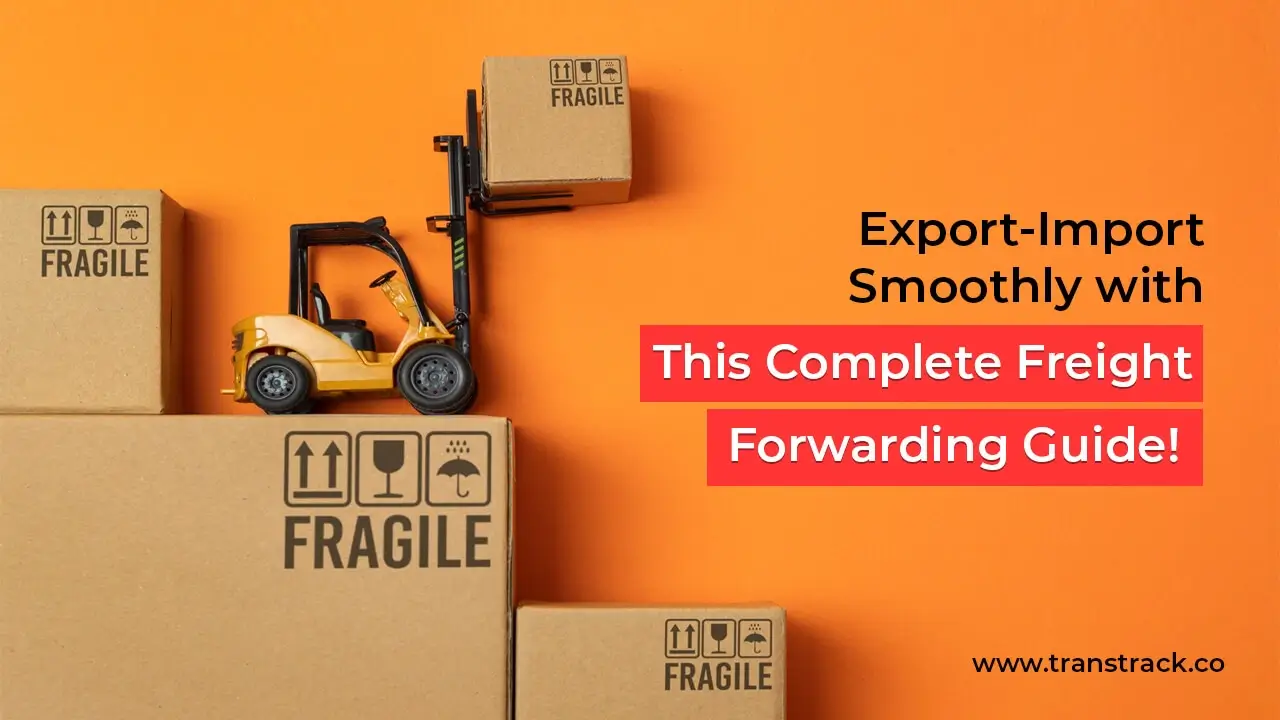Export-Import Smoothly with This Complete Freight Forwarding Guide!

Are you familiar with the term freight forwarding? In simple terms, shipping goods refers to the steps in moving imports and exports through a series of supply chain processes. The freight shipping industry collaborates with shipping companies, airlines, transportation services and customs agencies to move goods from their starting point to their final destination. Let’s go deeper in this TransTRACK article!
Freight Forwarding, what’s the meaning?
Logistics companies are responsible for arranging the delivery of goods (freight forwarding) between countries. The goods sent can be packages, containers, or a mixture of both. Their duties involve collaborating with companies and individuals carrying out import and export activities.
The client has control over the extent of the shipper’s role in the goods journey. For example, goods may contain container loads shipped from a factory in one country to another (as part of a further assembly process), or they may be ready-made and shipped directly from the manufacturer to the store’s warehouse. Freight forwarding companies have a variety of transportation modes (not just ships!), including sea, air, land by truck, or train.
Is freight forwarding synonymous with logistics?
The difference between freight forwarding and logistics, Third Party Logistics (3PL) service providers have the ability to manage various aspects of your supply chain process, while freight forwarding companies generally only focus on the physical movement of goods.
For example, 3PL service providers can also provide a variety of value-added services such as storage facilities (including bonded warehouses related to customs activities), container loading and unloading processes, kitting activities, assembly, and return management. All of these are extensions of core services such as loading and unloading of goods, order processing, picking and packing, courier transportation and delivery.
What are the duties of a freight forwarder?
Freight forwarding companies operate on behalf of their clients to ensure the smooth delivery of goods that have been entrusted to them. Generally, there are three components involved in this process: the factory or producer, the intermediary responsible for transporting the goods, and of course, the customer.
The main responsibilities of the expedition company include:
- Safety and Compliance – Whoever fills the container has a responsibility to ensure that the cargo is packed properly and safely for its next journey. This may be the responsibility of the sender or party sending the goods, and this will be arranged beforehand.
- Speed & Efficiency – Guarantee that goods arrive on time according to the schedule desired by the customer.
- Convenience – Save clients time by taking logistics coordination responsibilities off their to-do list.
The largest freight forwarding company in Indonesia
The largest freight forwarding company in Indonesia is Linc Group, which was founded in 2001. Currently, with their head office located in Jakarta, they have succeeded in developing themselves and have a team of 400 employees.
Linc provides complete solutions for supply chain and cargo logistics, including acting as a storage facility for various types of products, distribution center, shipping expedition service, domestic distributor, and even functioning as an online trade operator with comprehensive services.
They have built a good reputation in the areas of cargo transportation and supply chain solutions as previously explained, but what sets them apart is their value-added cargo transportation services that go far beyond the standards typically offered by freight logistics companies.
Types of Freight Forwarding
Freight forwarding companies have the ability to work with one or several transportation service companies to ensure the smooth delivery of goods from point A to point B with security and compliance with applicable regulations. These carriers can utilize one or more types of transportation modes, such as land transportation (road haulage), flights (air freight), or shipping by sea (sea freight).
Road Haulage
The delivery company will determine the most suitable transport vehicle option to carry the goods. One of the most common is the articulated truck (Artics), but there are other types of road vehicles designed specifically for transporting non-standard goods.
Air Freight
Below are the types of air freight forwards, including:
- Direct Service: Generally used for sending small packages that can be put in the baggage of an airplane that has been scheduled to fly.
- Consolidation: The most economical method of air transportation; multiple shipments combined in one flight. In using this method, shipping companies need to consider that this may impact transit times as they wait for other shipments to arrive.
- Leasing: A more expensive alternative: shipping companies rent entire aircraft to transport specific cargo according to shipping requirements.
Sea Freight
When it comes to shipping goods by sea, shipping companies must decide on the type of ship that best suits their clients’ requests. Special vehicles commonly used are Container Ships, Tankers, Breakbulk Carriers, Roro Vessels.
Conclusion
In the goods delivery industry, fleet management has a very important role in ensuring successful delivery. By utilizing the Fleet Management System provided by TransTRACK, shipping companies can carry out real-time monitoring of their fleet and plan delivery routes more optimally, so that the process of sending goods becomes more efficient and economical.
TransTRACK provides fleet management solutions that are integrated with GPS technology and real-time vehicle monitoring. This allows delivery companies to continuously monitor the condition of their vehicles, identify potential problems, and reduce the risk of disruption in their operations.
Topic





